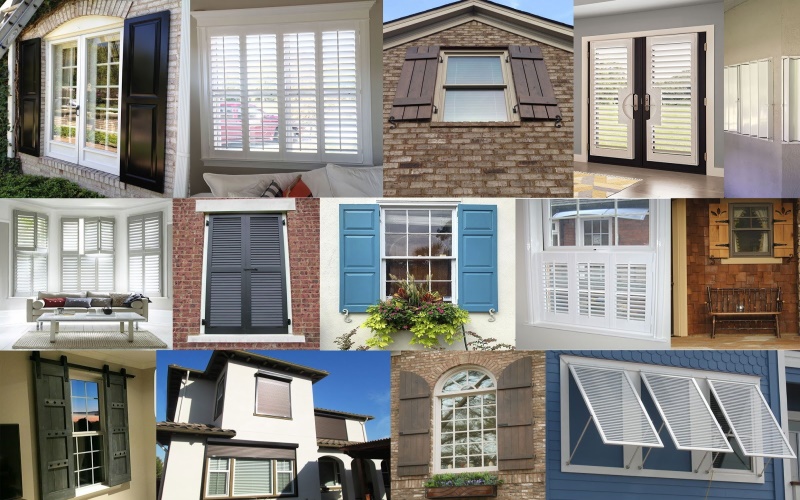Exterior window shutters are essential elements that improve the aesthetic appeal of any property. Furthermore, exterior window shutters provide users with protection, privacy, and shade. Your property’s general elegance depends on the interior and exterior style and materials. When choosing exterior window shutter material, consider durability, upkeep, and appearance. Below, we look at the most popular materials used to help you make an informed selection based on your preferences and practical needs.
1. Wood design
Wood is renowned for its exceptional elegance and adaptability. Wood has continued to be a traditional material for external shutters over time. The most preferred wood type is hardwood because of its natural resistance to rot. A unique feature of wood is that it can be customised to blend the architectural style of the shutter. It provides a warm and classic appearance when fitted. The demerit of wood shutters is that they require regular caulking and painting to withstand various weather conditions.
2. Vinyl Option
Vinyl is a cost-effective material that is low maintenance. It is commonly used in exterior window shutters because of its resistance to moisture, insects, and fading. Furthermore, vinyl material is durable, strong, and long-lasting. This material is available in a plethora of colours and styles. This allows users to achieve their dream aesthetic without needing regular maintenance. Vinyl may not provide the exact characteristics of wood, but it gives a practical choice for its unique and outstanding traits. If your home is constantly abuzz with activity, vinyl shutters are the ideal choice.
3. Composite
Engineered wood and PVC composites are composite materials that combine the advantages of many components. Although these shutters have improved durability and resistance to moisture and insects, they still frequently resemble timber shutters. Composite shutters provide an all-in-one solution that combines vinyl’s low care requirements with the traditional beauty of wood. These are a great option to combine style and functionality, and composite material is a perfect choice for your external window shutters.
4. Aluminium
Sleek and modern appearances are unique features associated with aluminium shutters. Aluminium is characterised by resistance to rust and corrosion, lightweight traits, and demands minimal upkeep. These shutters are offered in diverse styles and colours, catering to modern and minimalist design preferences. Although they may not provide the same insulation as alternative materials, aluminium shutters are an excellent option for individuals prioritising a sleek and modern aesthetic while requiring minimal maintenance.
5. Fibreglass
The rise in popularity of fibreglasses utilised exterior window shutters is attributed to the material resistance to harsh weather conditions. This is the perfect material to use if you live in areas that experience months of extreme weather. Fibreglass is also resistant to warping, insects, and rot. Besides, Fibreglass can be modified to provide a wood-like texture. This provides the needed aesthetic without the need for regular maintenance. Fibreglasses require huge capital, but their benefits outweigh the initial investment cost. The return on investment is worth your hard-earned money. Try it out today, and you will never regret it.
Conclusion
Choosing a perfect exterior window shutter for your home requires thoughtful consideration of your priorities, preferences, and budget. Each material presents distinct features and advantages, leaving the decision in your hands. First, lay down your specific aesthetic requirements to make sound decisions that meet your needs while improving the appeal of your shutters.
Selected material for your shutters affects the shutter look as well as the long-term functionality. Spend the required time considering your alternatives, carefully weighing the advantages and disadvantages, and then invest in shutters that perfectly complement your concept of a stunning and valuable exterior for your house.

